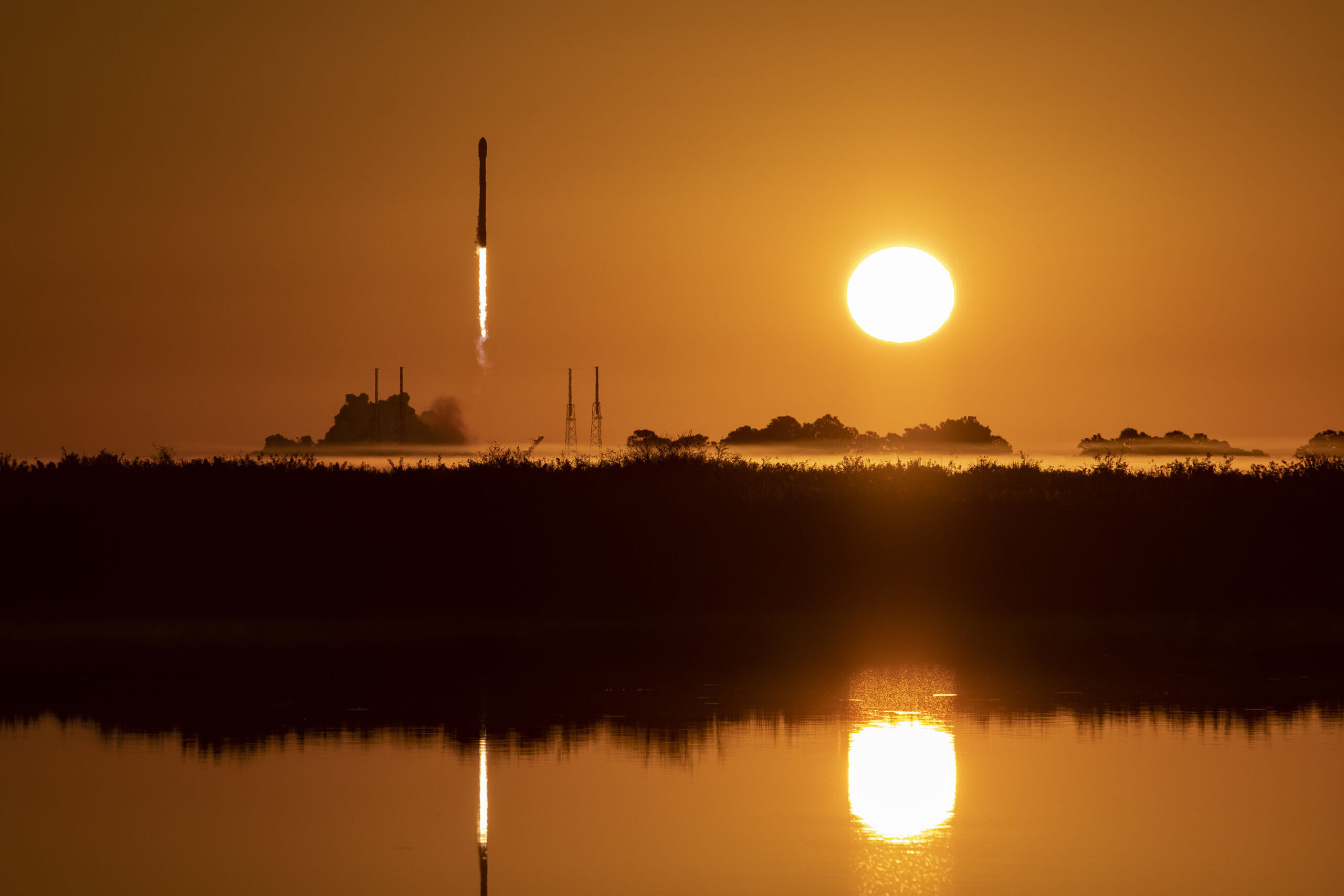Latest News

SpaceX launches GPS III SV06 to orbit. Photo: US Space Force
U.S. Space Force’s Space Systems Command (SSC) on Feb. 16 released two National Security Space Launch (NSSL) Phase 3 draft Requests for Proposals (RFP) based on a dual-lane acquisition approach to encourage new commercial entrants to bid on low-cost launch programs and ensure the U.S. is able to send satellites to space more expeditiously to respond to any threats posed by China.
The RFP “builds upon the historic successes of the NSSL program and responds to our nation’s need to address the pacing challenge,” Maj. Gen. Stephen Purdy, program executive officer for Assured Access to Space, said in a Feb. 16 statement. “We developed an acquisition strategy consisting of a dual-lane approach that provides access to diverse commercially available systems, increases resiliency through alternate launch sites and streamlined integration timelines, allows annual on-ramping of emerging launch providers and systems, secures launch capacity, enables supply chain stability, and enhances affordability for the most stressing National Security Space missions.”
Such assured access to space is one of Air Force Secretary Frank Kendall’s operational imperatives.
Lane 1 of SSC’s new dual lane approach “will use a multiple Firm Fixed Price Indefinite Delivery, Indefinite Quantity (IDIQ) contract open to all qualified bidders,” the command said.
“Bidders are not required to meet all NSSL orbits to compete in Lane 1,” per SSC. “Lane 1 will have annual on-ramping opportunities as emerging providers or systems are ready. Lane 1 covers procurements from FY 2025 to FY 2034 consisting of a five-year base ordering period plus a five-year option. Lane 1 serves more risk-tolerant space vehicles launching to commercially addressable orbits. Task orders for launch services are competed on an annual basis among all IDIQ awardees. The government may order missions individually or in blocks. Launch providers must propose fully-burdened launch service prices that include all applicable launch service support. Lane 1 also incorporates tiered mission assurance as required by each mission’s risk tolerance.”
Lane 2, by contrast, will likely be for companies already in the launch arena, as Lane 2 “includes missions that require full mission assurance with certified launch vehicles” and payloads that “require launches to more stressing orbits, necessitating higher performance launch systems, and complex security and integration requirements,” SSC said. SSC is to pick two companies for Lane 2 under firm fixed price IDIQ contracts.
The command said that it expects to release the final RFPs between April and June and to award contracts for Lane 1 and 2 in the fourth quarter of fiscal 2024.
Last November, SSSC entered into a Cooperative Research and Development Agreement (CRADA) with Blue Origin for the company’s New Glenn Rocket, more than three years after the company and Northrop Grumman lost out in February 2019 to SpaceX and United Launch Alliance (ULA) for launch awards under Phase 2 of National Security Space Launch (NSSL).
The CRADA “marks the restart of certification activities for Blue Origin’s New Glenn that began in 2018 when Blue Origin won a Launch Service Agreement,” SSC said last November. “SSC terminated Blue Origin’s LSA in December 2020 after the National Security Space Launch (NSSL) Phase 2 winners were announced.”
While the U.S. Air Force said that it did not pay termination costs to Northrop Grumman and Blue Origin for ending their Launch Service Agreement Other Transaction Authority pacts on Dec. 31, 2020, the service did pay the companies more than $787 million for meeting milestones in the more than two years the companies spent developing their launch systems–OmegA for Northrop Grumman and New Glenn for Blue Origin.
The Air Force paid $531 million to Northrop Grumman and $255.5 million to Blue Origin.
Under SSC’s new CRADA with Blue Origin, the company “must successfully complete certification flights and provide design and qualification data to enable AATS to conduct its independent verification and validation process,” SSC said.
Get the latest Via Satellite news!
Subscribe Now